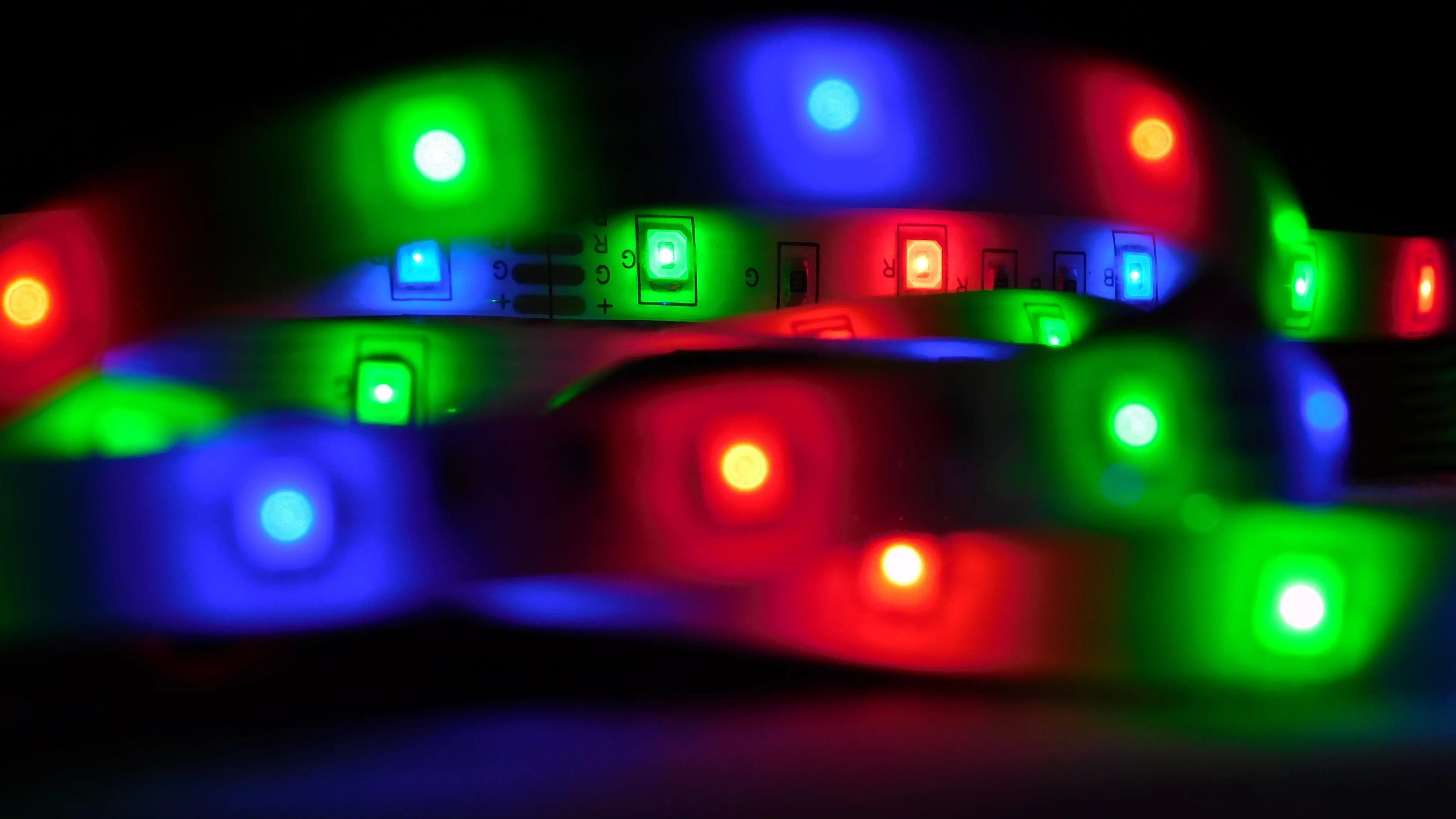LED strips are a fun and versatile way to add lighting to any room. But how do led strip lights work when you want to install them permanently? If you’ve never worked with LED strips before, the prospect of wiring them up to your mains electricity supply can be a little daunting.
However, there’s no need to be worried. In this article, we’ll run through everything you need to know about connecting LED strip lights to your mains electricity supply. We’ll also show you how to wire them up to a switch, so you can control them however you like.
So, let’s get started!

The 6 steps to installing a mains-powered LED strip
LED strips are typically sold in rolls and can be brought in various configurations, including single colour, multi-colour (RGB) and waterproof, for outdoor use. Purchasing the correct power supply is essential to ensure your LED lights function correctly and safely.
Most LED strips will come with a two-pin connector on each end – one for connecting to the power supply and one for daisy chaining multiple strips together. Once you have your supplies, follow these steps to get your LED strip lights up and running.
We assume you want to install an RGB LED strip for this tutorial. If you’re installing a single-colour LED strip, the process is the same, but the wiring will be reduced to two rather than five wires. We’re also opting to use solderless clamps to make this task as beginner-friendly as possible.
1. The first thing you need to do is cut your LED strip to the length you need. Most strips come with a cutting point every few inches (usually every three or six LEDs), so getting a clean, straight cut in the right place is easy. Be sure to cut directly along the line, right through the contacts.
2. Push the LED strip into the short side of a solderless clamp, and press down the connector until it clips shut.
3. Take a length of low voltage 5-wire for led strip lights. The wires are for white, red, green, blue and power supply. Peel the wires apart at the end that you’ll insert into the solderless clamp. An inch or two should suffice. There is no need to strip the wires, as the solderless clamp will cut through and make the connection. Put the wire into the wire side of the solderless clamp. Make sure they are in the same order as highlighted on the clamp, which may not be in the same order as the wire itself, so rearrange as necessary.
4. Separate the wires at the other end in the same way as in the above step, but this time you will need to strip a little of the plastic sleeve to make a connection with the controller. On the controller, loosen the screws for the incoming connections. Ensure that the wires are correctly aligned with the letters shown on the controller.
5. Finally, plug a transformer into the controller. Using LED strip lights with a transformer ensures that the power is safely stepped down from a 230V power supply to either 12v or 24V. Ensure you have the appropriate transformer; otherwise, you’ll risk your LEDs malfunctioning.
6. Plug your transformer into your mains supply. Voila! You’ve successfully installed your mains-powered LED strip lights.
Now you know how to wire LED strip lights, so get creative with your lighting and enjoy!
Conclusion
LED light strips are highly versatile and can be put pretty much anywhere. Anywhere you need (or want) light, LED strips are a quick and cheap way to achieve it.
While they might seem daunting to install initially, following the above steps will have you up and running in no time. Just be sure to take all the necessary safety precautions when working with electricity, and you’ll be fine. In other case find a local professional electrician. Have fun!
FAQs
To connect an RGB LED strip light to a power supply, you’ll need a 5-wire cable, controller, and transformer. Using solderless clamps, it’s a quick process to wire everything up. Use our six-step guide above for a detailed walkthrough.
Yes. LED lights can be wired directly into the mains, bypassing a plug socket, but a suitable transformer must be included in the circuit to drop the voltage from 230V to 12v or 24V.
If you want to connect your LED lights directly to the mains, bypassing a plug socket, you can do so. You will need a buck converter, or similar, to step down the voltage to 12V. Of course, working with your mains supply is much more dangerous than the option we described above.
You can use wires to share the load from one power supply to several different LED strips. This is only safe when the strips are of similar type and voltage.
Leave a Reply